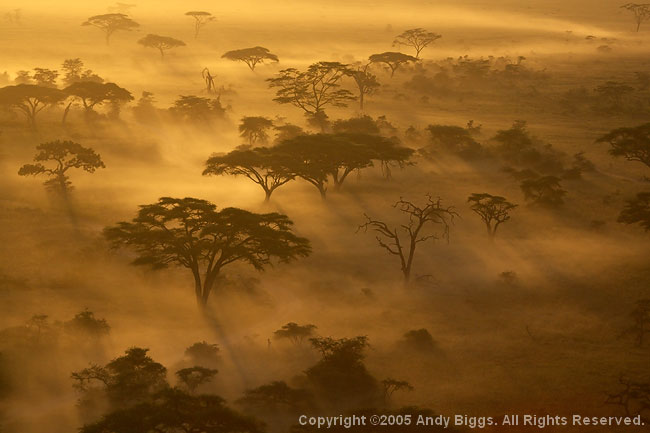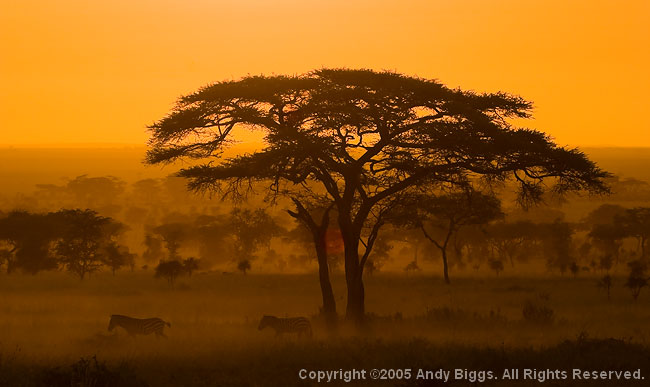

 |
 |
 |
 |
 |
We are trying to develop a community where photographers can come and discuss nature, wildlife and pet photography related matters. We encourage you to enter the forums to share, make comments or ask questions about this interview or any other content of NWP.
This article is Copyright 2006, James Morrissey, and may not, in part or in whole, be reproduced in any electronic or printed medium without prior permission from the author. The images in this article are the property of Andy Biggs and have been licensed to James Morrissey and the NWP Photo Forum for the purpose of this interview.
Part III: Tips/Techniques

JM: Do you consider yourself an environmental activist? If so, why?
AB: I guess I don't think of myself as an activist, but in many ways I am. By taking people on safari, I am educating people on how ecosystems can be at risk from human encroachment. Off the top of my head, I cannot think of a single national park or wildlife preserve in Africa that is not currently going through challenges associated with human interference. I am very sensitive to this because I want these areas preserved for generations - hundres of years from now.
JM: Are there any community organizations that you feel are very effective in terms of results?
AB: I am a huge fan of hte African Wildlife Foundation, as well as, the World Wildlife Fund. You can visit their websites at www.awf.org and www.wwf.org.
JM: Can you talk about what your photographic day looks like? How does your family fit into it?
AB: I guess this all depends if I am in Africa or not. My typical safari day consists of an eary morning wakeup, followed by a quick breakfast and we are off for a day of wildlife viewing and photography. To get the best light, we need to be out before sunrise. We are often out in the bush until around lunchtime, and then return back to camp for a nice lunch. After lunch, I download images to my laptop, and take a quick nap. We are back out on safari around 3:30 until dusk. Around the dinner table, we all share our wildlife experiences and stories, followed by after-dinner photo reviews and perhaps a workflow discussion. Back to bed, so we can be ready to go for the next day!
JM: Do you have any techniques/tips for people who are doing an African Safari?
AB: 1) Bracket the difficult exposures if shooting film, or learn how to read histograms on digital cameras. When photographing wildlife, you typically have dark bodies against light backgrounds, which are one of the most difficult situations to expose for. An incident meter is also a great idea.
2) Know your equipment before you depart for your safari trip. Learning to use a new camera in the field will most likely end up as that: a test.
3) Bring along a bean bag, or some other means to support your camera. A stable camera platform is preferable to hand holding. I prefer the Kinesis Safari Sack product.
4) Bring the longest lens that you can afford. There will be many shots that will be close, and there will be many that are far away. Having the best tool for the job will definitely help. In 35mm terms, a 400mm lens is a great starting point.
5) You should try and take your best photographs within the first hour of sunlight, and the last hour of sunlight. The closer the sun is to the horizon, the warmer and more dramatic your shots will be.
6) Try to practice the 'rule of thirds'. By offsetting your subject away from the center of the frame, you will create nice negative space that has balance and harmony to your images.

7) At the very end of the day, when the sun is below the horizon, flash photography is a must. I have found that a Better Beamer or Flash X-Tender attached to your flash can illuminate wildlife farther away than you might think. Better Beamers are also great to put the catch light in the eyes of a far away mammal or bird.
8) Learn more about the wildlife you would like to photograph. You will be amazed at the abundance and variety of wildlife in east Africa, and how they interrelate.
You can view more of Andy Biggs' work at www.andybiggs.com.
If you would like to learn more about James Morrissey, you may visit www.morrisseyphotography.com. [James Morrissey is wedding photographer focusing on the Jackson Hole weddings, Yellowstone weddings, and Grand Teton weddings (located in Wyoming), as well as, the greater New York weddings.]
As always, we encourage you to come join the community and to be participants in the forums! If you have not registered yet, please
 |
 |
 |
 |